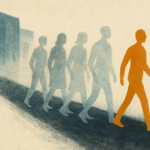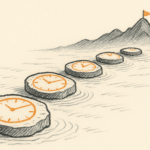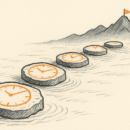Learning from the Crocs shooting star phenomenon
“For a while, they were just right there, in the middle of American culture,” says Richard Polk, the owner of Pedestrian Shops and ComfortableShoes.com, based in Boulder, Colo. Polk’s store was the first real shoe store to stock the crazy-looking plastic shoes, a few years back, when they first roared out of nearby Aurora to take the world by storm. Polk was a believer…Yet looking back, even he can’t quite believe it. “It was amazing — here you got grown-ups talking about serious stuff, wearing royal blue shoes,” Polk says. “I don’t think that’ll ever happen again.”
MIKE MADDEN, Salon.com (27 July 2009)
You would have to be particularly isolated not to have heard about Crocs. Here’s the story so far, part one. In 2002, three men decided to build a business around a decidedly unlikely product: a plastic shoe with odd cheese-like perforations at the front. The shoes were ugly, but they were also lightweight, comfortable, washable and virtually indestructible. The business took off fast, clocking sales in excess of $1 million in its first year. The founders left their day jobs, and soon everyone and his uncle seemed to want to be seen in Crocs. Crocs had become a fashion statement.
By 2005, revenues were over $100 million, and the clogs and flip-flops could be found in 40 countries. In the following year, revenue tripled again. Crocs were now a global phenomenon. The company went public, with an IPO valuing it at $1 billion. At its peak in 2007, the company enjoyed a $5 billion valuation. All in just five years.
As you’ve guessed, part two of the story is less pretty. Sales began tanking in 2008. The company lost $185 million that year, and shed 2,000 jobs. In 2009, Crocs has made losses in the first two quarters. It now trades at around $5 a share, down from a high of nearly $70 in 2007.
What went wrong? Crocs blames the global recession for its woes, but there’s more going on here. There are three big lessons for would-be entrepreneurs. First, make sure you have something real you’re selling – something that adds genuine value to customers. A coloured plastic shoe is only going to be desirable for a short while. Don’t confuse fads for sustainable success. Some products people buy because they see everyone wearing them. Then, when no-one’s wearing them, they stop buying.
Be very circumspect about sudden success. Was there any real reason for Crocs to sell that fast from 2002 to 2007? Clever advertising helped, and so did celebrity endorsements (at their height, Crocs were seen on the feet of people as diverse as Brad Pitt, Jack Nicholson and George W. Bush). But these things alone can’t sustain interest in a product.
Second, in your success lie the seeds of your possible failure. The fact that Crocs were indestructible may have contributed markedly to the decline. Once you had a pair they seemed to last forever, so there was little incentive to replace them soon. And how many plastic shoes can you have in your wardrobe?
Third is the issue of sustainable competitive advantage. How unique is your product, and how easily copied? Crocs introduced something not seen before. But a plastic product with a basic design is easily mimicked. Soon, the lower end of the market was flooded with cheap clones, virtually indistinguishable from the original (you can find them in Tusky’s).
Sustained success is about deep competitive advantage, about giving real value, and about brand evolution. Anything else is a shooting star. Crocs could still make it, but it will have to rethink its entire offering and proposition first. I hope those three guys were wise enough to put aside some real money while the fun lasted…

Buy Sunny Bindra's new book
The X in CX
here »
Popular Posts
- Where are you rushing to—your funeral?June 29, 2025
- The map will appear—once you start walking.July 6, 2025
- We’re letting the bad drive out the goodJuly 20, 2025
- How to spot a real thinkerJune 15, 2025















